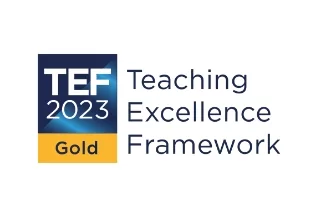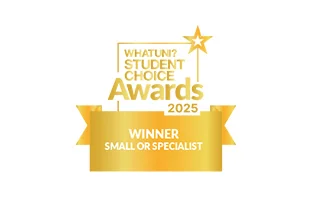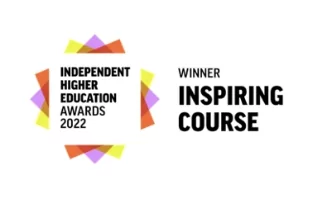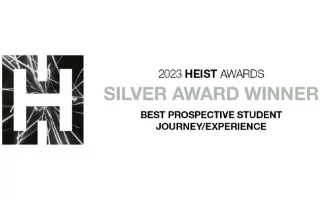Information and guidance for authors
Norland Educare Research Journal
Guidance for authors
Abstract submission
For papers to be considered for publication in the Norland Educare Research Journal, authors are invited to submit an extended abstract of 500 words using the template.
Paper submissions
Length of papers
- Empirical, conceptual, philosophical and methodological papers may be up to 8,000 words, including illustrative materials but not including appendices and references.
- Papers based on systematic literature reviews and scoping studies may be longer – up to 10,000 words – including illustrative materials but not including appendices and references.
- Critical reviews and position papers must be up to 5,000 words, including illustrative materials but not including appendices and references.
Language
The Norland Educare Research Journal accepts papers in British English only. The papers should be written in plain and clear language and follow Harvard academic conventions. Illustrative materials (e.g., tables, graphs, figures, charts and photographs) should be carefully created to enhance the clarity of the paper. The material should be self-explanatory and easy to read.
Manuscript structure
The following is indicative only and intended to be helpful for early career researchers, we welcome innovation and encourage a plurality of approaches.
The title of the paper
The name(s) of the author(s) and their institutional affiliation
The Journal will remove these details for you when the paper is sent for peer review.
The abstract
The abstract should be under 200 words and should encapsulate the key points and findings of the paper.
Keywords
Five to seven keywords should be given in italics, separated by commas.
The main body of the manuscript
Introduction
The introduction should clearly state the aim(s) of the paper and provide contextual information.
Literature review
The literature review should locate the paper in relevant theories and extant literature, as well as identifying any research gaps.
Methodology
- For empirical and methodological research papers, authors should include information about the research design, research sample, data analysis, ethical approval details and ethical considerations.
- For systematic literature reviews and scoping studies, authors should outline the methodology and steps followed in searching and locating studies, inclusion/exclusion criteria, and the method used for analysing the selected studies. Where a formal process is adhered to, such as PRISMA or Cochrane, their guidance for content should be followed.
- Philosophical, position or critical review papers may not have a methodology section but, authors should clearly articulate their thesis, ontology and epistemology.
Results and discussion section(s)
The layout here will depend on the type of research or discussion undertaken. The results and discussion section(s) presents the results and critically discusses them in the context of the literature review and considers their significance and limitations.
Conclusion
The conclusions section summarises key results/arguments and may include any plans for relevant future work.
Declarations and acknowledgements
Acknowledgements
The author(s) must acknowledge anyone who has contributed towards the article but does not meet the criteria of authorship, e.g. a person who acted in an advisory capacity, has provided sources of information and/or has offered purely technical support.
Funding
The author(s) must declare all sources of funding for the reported research, this could include, but it not limited to, employer (institution) details, funding body and role, and grant numbers.
Conflict of interest statement
The author(s) must disclose any potential conflicts of interest (e.g. financial, funding, employment, commercial, legal or professional relationships) that may have influenced, or be perceived to influence, their publication or the approach they took to their work. If there are no conflicts of interest, this should be stated.
Use of AI
The journal does not allow the use of generative AI tools beyond those used for language improvement (for example Grammarly). Authors who use such tools must declare their use in the author declaration disclosing which tools were used including full name and version number and how the tool was used. Authors are fully responsible for all content and all parts of their manuscripts. Use of AI may be subject to editorial investigation.
Reference list
This should only include work that is cited in the paper and should be laid out according to Harvard referencing.
References for work not originally published in English should be listed in the original language of the publication and afterwards transliterated in English in square brackets.
Typographic guidance for manuscript preparation
Headings
- Heading 1 – Font: Calibri, size 14pt, bold
- Heading 2 -Font: Calibri, size: 12pt, bold italics
- Heading 3 – Font: Calibri, size 12pt, italics
- Heading 4 – Font: Calibri, size 11, bold
- Font colour for all headings: black
Body text
- Font: Calibri
- Font size: 11pt
- Text style: normal
- Font colour: black
Page set-up
- A4
- Normal margins (top: 2.54cm, bottom: 2.54cm, left: 2.54cm, right: 2.54cm)
- Header: 1.25cm
- Footer: 1.25cm
- Double line spacing
- Insert page numbers to the right, bottom of page, calibri 9pt
Tables
- Font and font size: Calibri 11pt
- Accent colours – light grey
Table example – please keep tables within the page margins.
| Bold heading 11pt | Bold heading 11pt | Bold heading 11pt | Bold heading |
| Body copy | Body copy | Body copy | Body copy |
Labelling illustrative materials
Diagrams, charts, graphs, illustrations and photographs must be labelled as figures, and the title must be positioned below them in Calibri 11pt.
Proofreading
It is the responsibility of the author(s) to proofread the manuscript before its publication.
Document saving
- Documents must be saved as .doc or .docx files.
- Charts, illustrations, figures and photos must be formatted as .jpg or .tiff files with a minimum resolution of 300dpi.
Manuscript submission
The author or corresponding author must submit the following files:
- File 1: Full paper. Please name your file with the name of the corresponding author then submission 1. For instance ‘Jones submission 1’.
- File 2: If applicable send the written permission of the publisher or author of any copyrighted work you are using.
Submit the files to [email protected].




